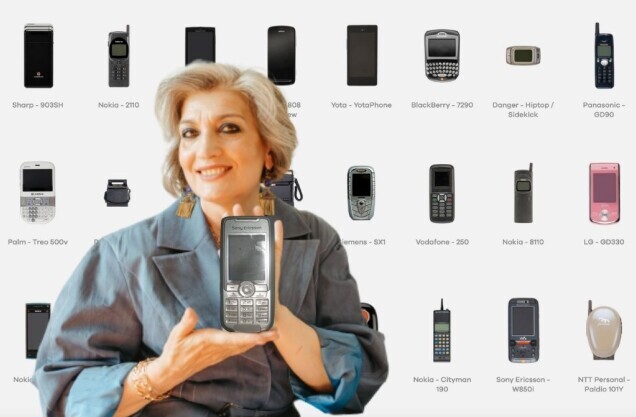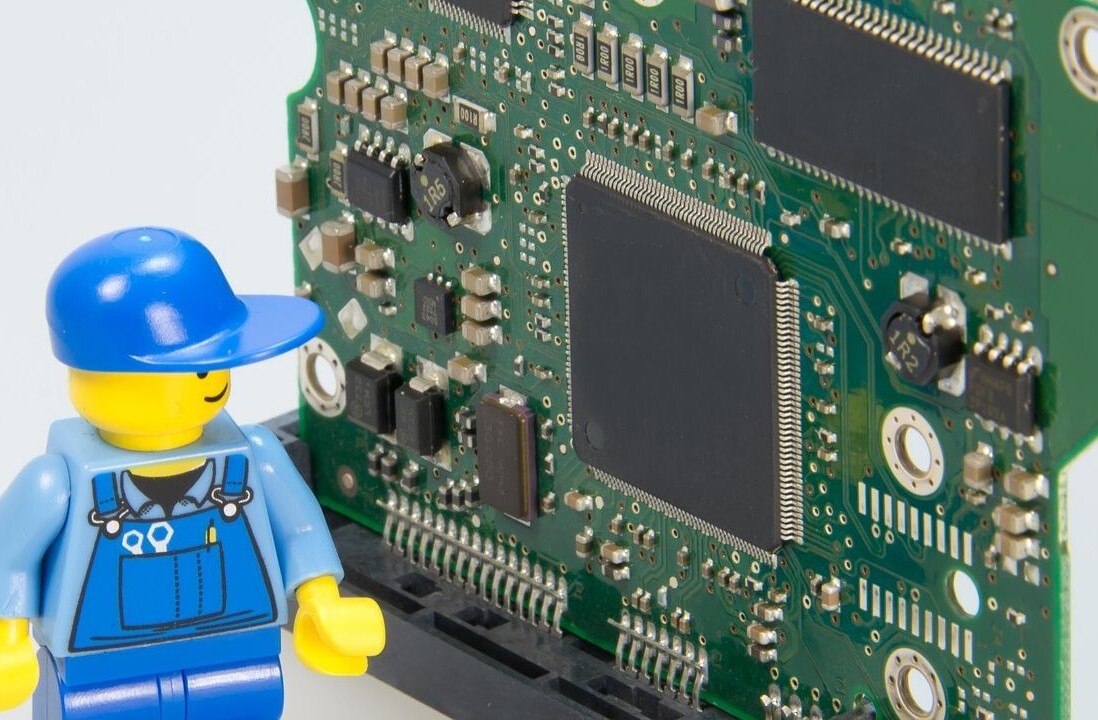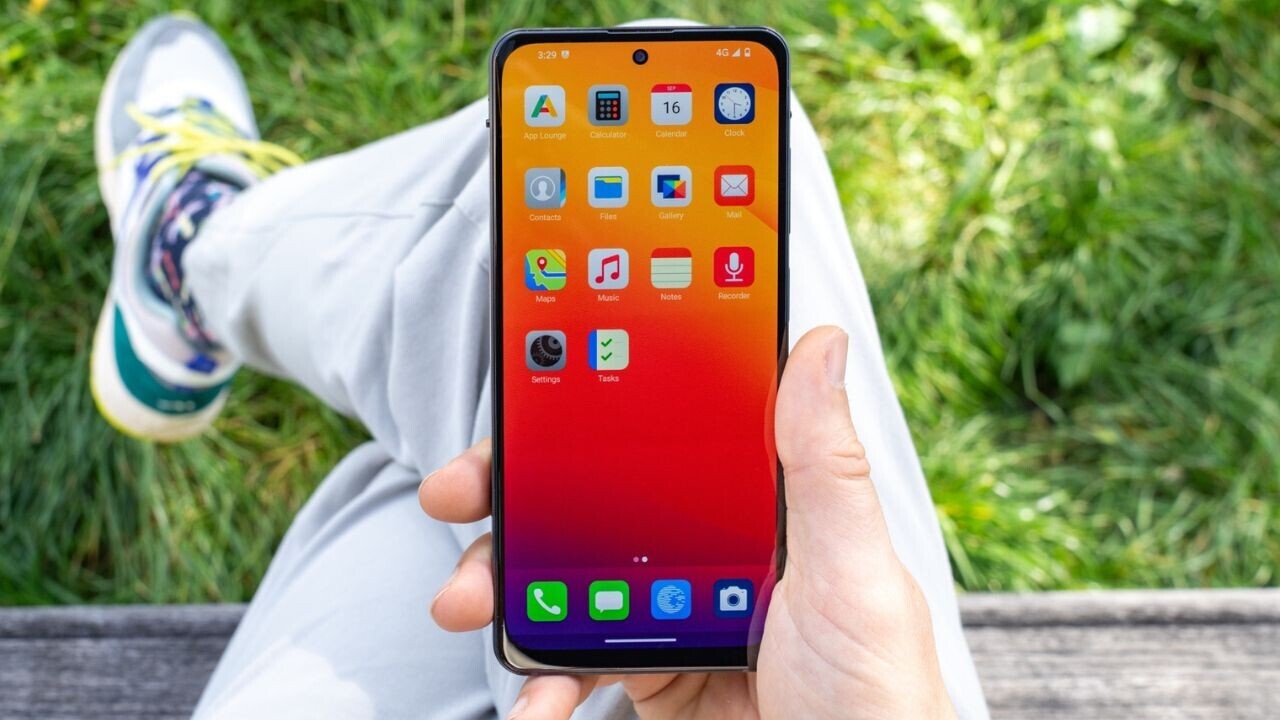
My ancient Samsung Galaxy is ready for retirement. Cracks expand across the screen, photos are hazy blurs, and the battery barely survives a day. It’s time to buy a replacement.
The initial contenders for my cash were the usual mix: Androids and iPhones with old names, incremental upgrades, and eye-watering price tags. While mulling over the options, a serendipitous email arrived in my inbox. A budding phonemaker called Murena was building a new handset with a bullish promise: “the ultimate pro-privacy smartphone.”
To substantiate the slogan, the company flaunted two compelling features: a physical “kill switch” to disconnect the device and an anti-tracking operating system. Consider me intrigued.
The announcement of the phone — named the Murena 2 — was timely. Just hours later, a news story provided an inadvertent advertisement for the product.
Several US government agencies had been illegally using location data taken from mobile apps. In one case, an official had tracked coworkers for personal reasons.
Such scandals have become commonplace.
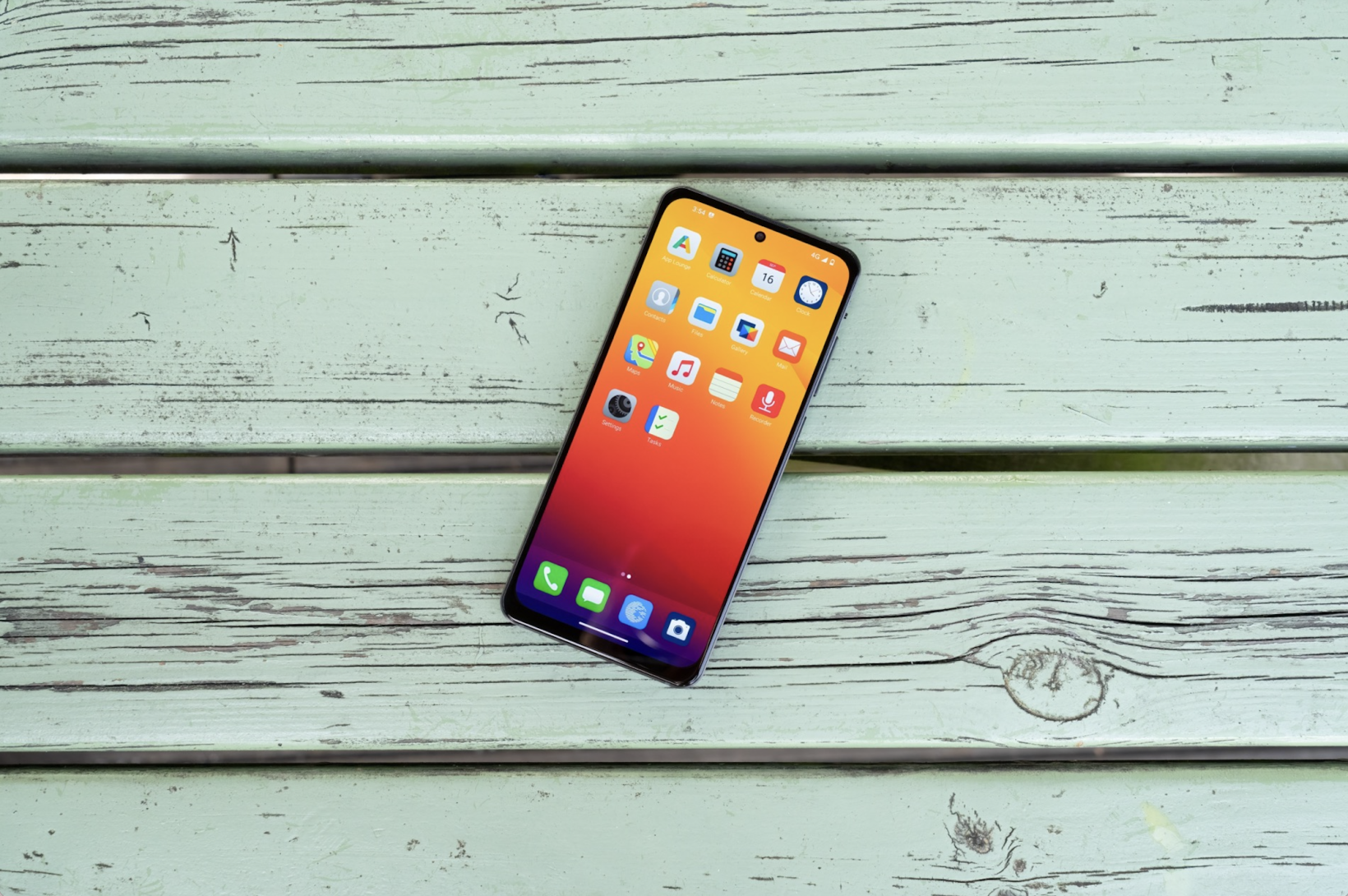
In the past few weeks alone, politicians have accused the Indian government of phone tapping, big box repair stores have snooped on customer devices, and Motorola users have sued the company for “surreptitiously” taking data from their selfies. Prince Harry has also won the latest stage in his lawsuit over alleged phone hacking by newspapers.
The frequency of the offences has a numbing effect. In the decade since Edward Snowden exposed rampant surveillance of our devices, eavesdropping has become just another boring dystopia.
Our nonchalance is reinforced by a sense that ordinary folk aren’t impacted — but that may be wishful thinking. Just a fortnight ago, reports emerged that British police are requesting data from menstrual tracking apps after “unexplained” pregnancy losses.
Average Janes and Joes face a further threat from big tech’s push into health insurance. Any company that sets insurance rates will find enormous value in the personal data on our phones.
There’s also a more pressing danger lurking.
“You have no guarantee that the data is never going to be hacked,” Alexis Noetinger, Murena’s COO, tells TNW. “For us, this is the biggest issue. The more data that is collected, the more risk there is that this data can fall into the wrong hands.”
The Murena 2 aims to mitigate this risk. Set to launch in December, the handset promises “unparalleled” levels of privacy. To test the claim, we got our hands on a prototype of the device.
Building walls
Our trial doesn’t have the most encouraging start. After turning on the phone, a warning message appears on the screen: “Orange state: Your device has been unlocked and can’t be trusted.”
It’s an inauspicious welcome, but Murena assures us that it’s just a teething issue with the pre-release model. From that point on, the software ran smoothly — which we had expected from Murena.
The French startup emerged from /e/OS, a “deGoogled” operating system. A privacy-focused fork of Android, /e/OS is an anti-tracking, democratised version of its progenitor.
The operating system is open-source, which means anyone can probe the privacy protections. By default, it doesn’t send any data to Google or third parties.
On launch, the Big G’s apps and services have been replaced by open-source versions. If you do install more familiar alternatives, the tracking can be restricted.
“The idea we had was to tilt the status quo on its head, and instead of promoting proprietary and closed solutions, to develop an alternative based on open-source software,” Noetinger says.
That status quo is a duopoly that’s dominated the sector for over a decade.
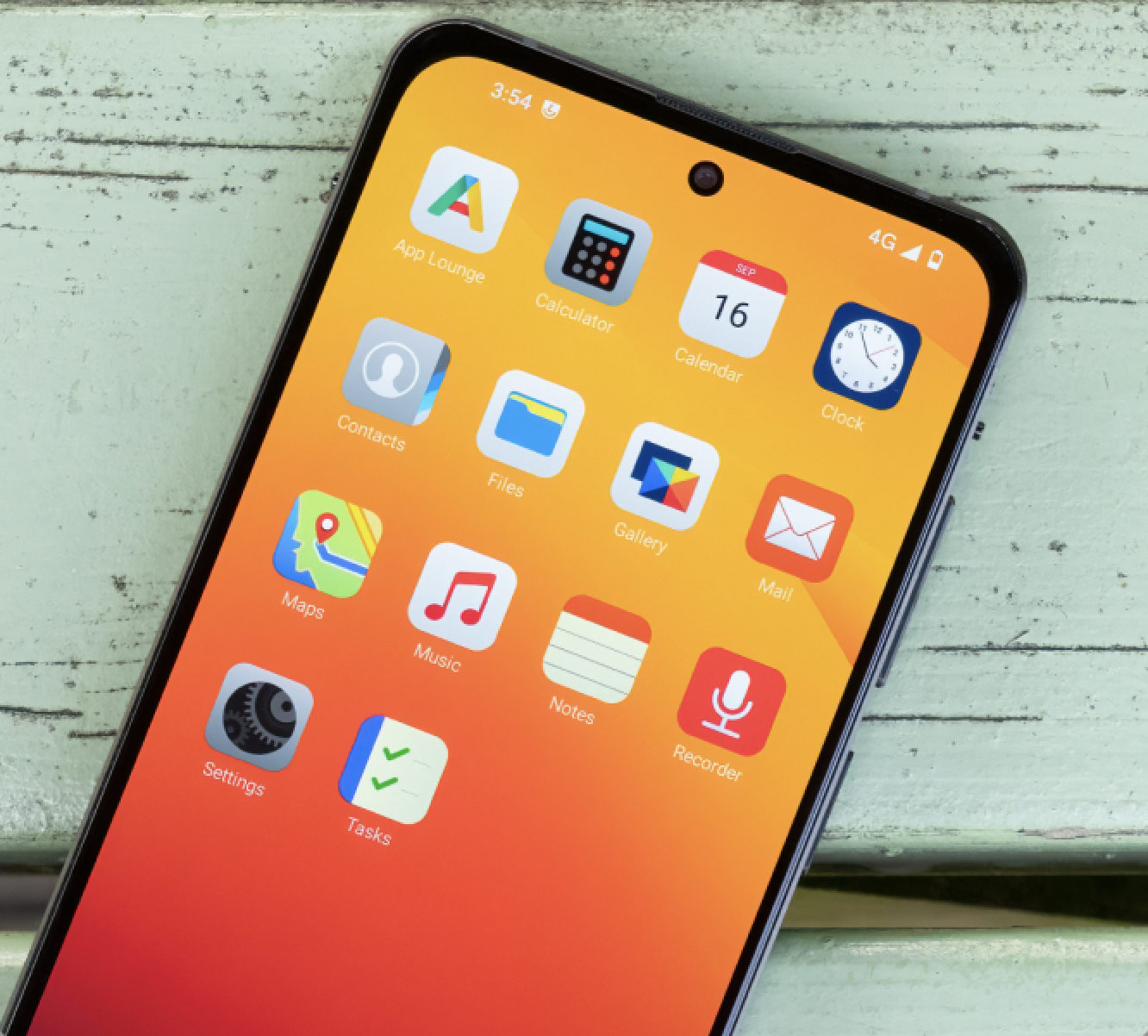
After Blackberry plummeted from the industry’s pinnacle, Android and Apple devoured the smartphone market between them. Regular consumers now only have two real choices: go with Android and its voracious data collection, or opt for the iPhone’s closed ecosystem, which may provide more privacy, but still gobbles up ample user information.
In 2021, researchers at Trinity College Dublin found that both operating systems share data with their motherships every 4.5 minutes on average — even when the handsets aren’t being used.
The data that they send is diverse and detailed. It includes your location, phone number, cookies, local network, and even information about other devices nearby. Some of this is shared when the phone is sitting idle in a pocket or bag.
According to the Trinity team, it could allow location tracking when location services are disabled. They found that both Apple’s iOS and Android transmit telemetry — despite users explicitly opting out of this.
The researchers also contested Apple’s claims of superior protection. They argued that iOS offered “no greater privacy than Google devices.”
“I think most people accept that Apple and Google need to collect data from our phones to provide services such as iCloud or Google Drive,” said study author Professor Douglas Leith.
“But when we simply use our phones as phones — to make and receive calls and nothing more — it is much harder to see why Apple and Google need to collect data.”
There is one obvious reason why it’s necessary: advertising.
Targets on our devices
Online ads provide the bulk of Google’s revenues, and data provides the biggest selling point. It creates detailed profiles of our real-world tastes, demographics, and behaviours, which advertisers use to target us with ads.
This personalised marketing can be convenient for consumers. But it can also turbocharge political propaganda, disinformation, echo chambers, and exploitation of the vulnerable.
Another bugbear for privacy advocates is government access. Authorities can request the data with a warrant — and they do. Google regularly gives law enforcement agencies search and location data.
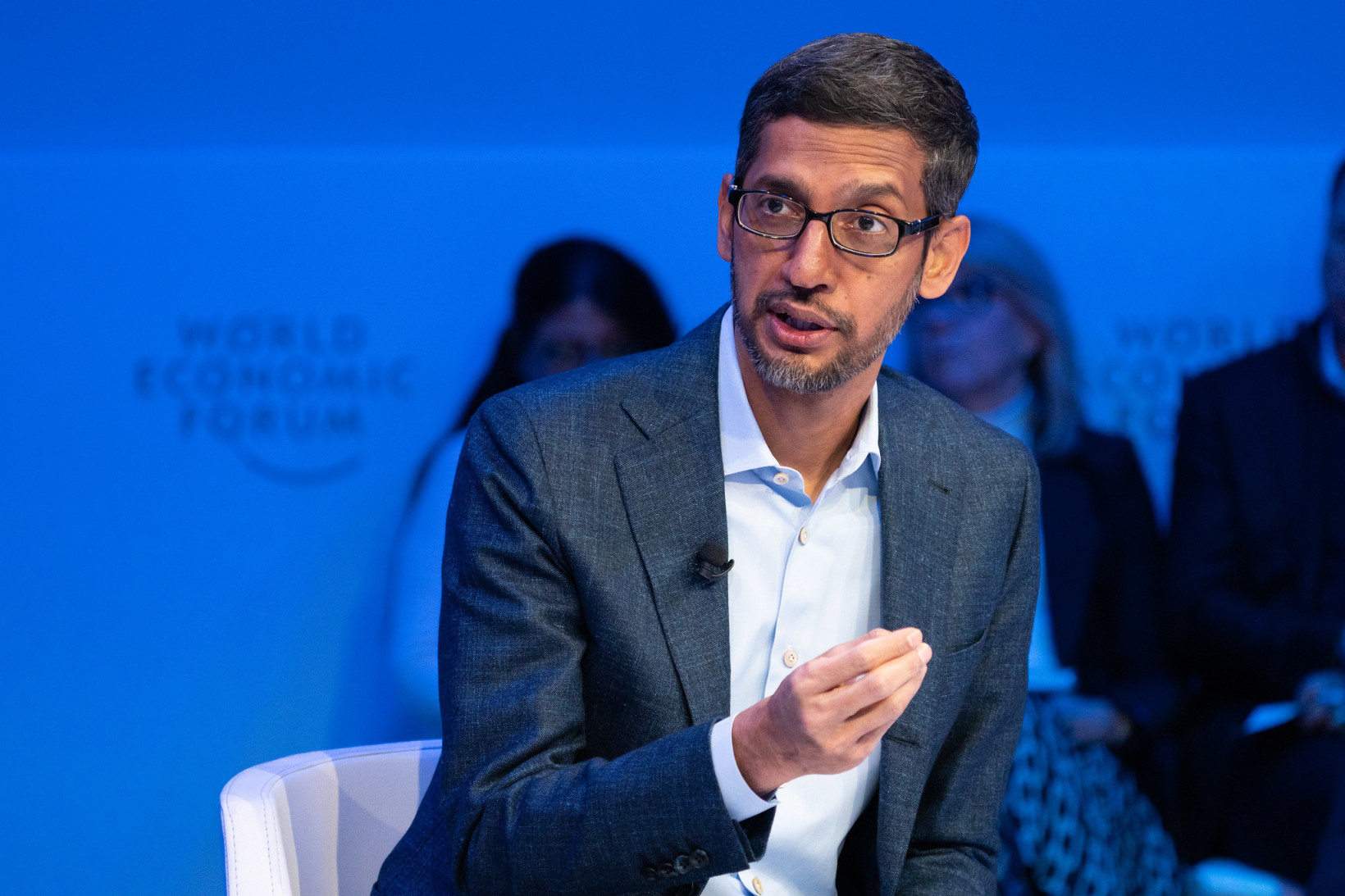
These issues extend from operating systems to apps. Facebook, for instance, tracks you across all its apps and sites — even after you log off the social network. The social network requests a dizzying array of permissions, from your contacts, calls, and messages to your camera, microphone, and storage. To use Facebook, you must give the company almost full control of your device.
Once you open the app, the Meta behemoth monitors when you log in, what you browse, where you go, which products you buy, and how long you’re on the platform. All of this determines the ads we receive. Sometimes, it also serves more nefarious purposes.
Personal data has been stolen from Facebook by hackers, misused by third-party apps, publicly exposed, and shared without permission. Most infamously, the data of up to 87 million users was harvested without permission by Cambridge Analytica during the 2016 US Presidential election.
It was a damning breach for Facebook. But the platform is far from the only app that puts our data at risk. Murena’s pitch for /e/OS is protection from them all.
An alternative OS
On /e/OS, every tracker is removed by default. Extra privacy protections are also installed, while connections to Google are cut.
The deGoogling is extensive. The Google default search engine is replaced by a Murena system, Google apps are switched for open source equivalent, no Google servers are used to check connectivity, geolocation uses Mozilla services, and the Google Play Store is ditched for Murena’s App Lounge.
The full extent of the deGoogling is too broad to catalogue here — although some still wish it was wider. More on that later.

The OS is paired with an advanced privacy module. Once inside, you can monitor each app’s permissions, as well as the hidden trackers, which collect your data and follow your activity. You can then cut the tracking.
“We give the user the visibility on which app is trying to access the data — and which tracker is trying to access the data,” Noetinger says.
You can also find privacy scores for each app, which contains some big surprises. Facebook, for instance, got a whopping nine out of 10 for privacy — the same as Signal. LinkedIn and Spotify, meanwhile, were both given zero out of 10. TikTok, a bogey app for many in the Western world, received a middling four.
Facebook’s apparent superiority has a simple explanation: the app doesn’t use trackers. Yet it obviously still collects copious user data. As Murena told TNW, Facebook doesn’t need a tracker “because it is already one big tracker.” Unfortunately, this somewhat devalues the privacy scores.
Thankfully, you can still fortify your defences against these snooping apps. /e/OS users can fake their location to random and specific places, use a dummy email, or even hide their IP address.
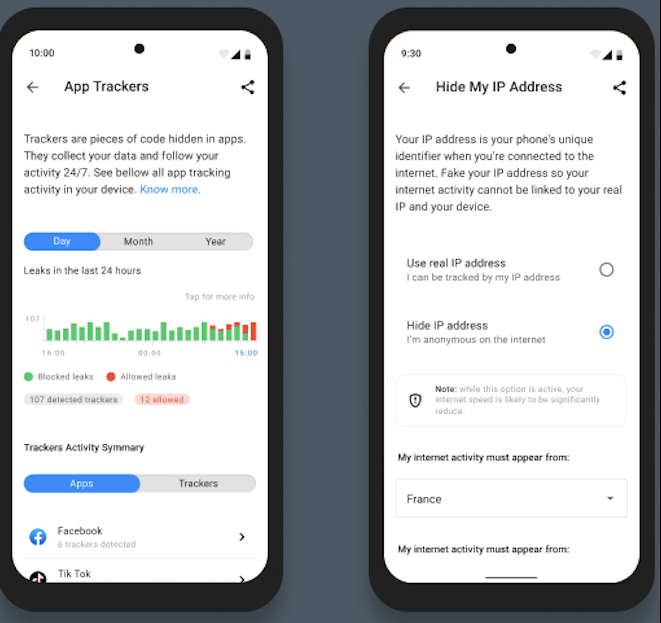
Alongside the operating system and privacy features, /e/OS provides a default set of open-source apps and online services. Among them is the Murena Cloud, which includes an email account, cloud storage, and an online office suite.
In our experience, the software performed pretty well. Like the operating system, the apps are fairly intuitive, functional, and familiar to Android users — although they lack the slickness and style of the Google versions.
Then there is the app store — which is where the deGoogling gets contentious.
Awkward applications
Additional applications for the Murena 2 are downloaded from the /e/OS App Lounge, an open-source system that connects directly to the Google Play Store.
The App Lounge combines common apps, open-source apps, and progressive web apps (PWAs) — which work directly from a browser — in one single repository. According to Murena, there’s no other app store that does this today.
To access Google products, the system has a compatibility layer. This means that you can still access Android apps. The free ones are accessible via anonymous browsing to circumvent trackers, but the paid apps still require a Google account.
These concessions have irked early adopters. Murena wants to create a deGoogled world, but won’t fully cut connections to the tech giant.
It’s struck a balance that won’t satisfy every privacy advocate, but the business case is clear. An absence of Play Store apps and Google services would likely send the device to an early grave. It would certainly be a dealbreaker for me.
The compromise evokes the “privacy paradox.” This phenomenon arises when people claim to highly value their privacy, but readily disregard the protection of their personal data. Noetinger sympathises with their plight.
“We know that people need to access some applications because they don’t have the choice,” he says.
“This way, you can still use the applications you need. If they feature trackers, you can block them, and we have additional features that can be quite aggressive.”

Another issue with the Google link is the App Lounge. When the Murena One launched last year, the developer community XDA claimed that the App Lounge is in a legal “grey area,” because it pulls apps from Google’s servers while bypassing the requirement for a Google account.
Murena acknowledges that there’s an issue here. The company told TNW that Google has hardened its account usage policy this year. Murena said that it proactively warns users about the potential curbs, but that it hadn’t received any reports of restrictions related to the App Lounge. The company assures users that the App Lounge’s terms and conditions are compatible with those of Google.
Let’s get physical
After finding a foothold in smartphone software, Murena ventured into hardware with last year’s launch of the Murena 1. Its successor adds several compelling features.
One that really caught our eye is the new physical kill switch. This disables all the device’s microphones and cameras, which many apps use for unspecified reasons. They’re also vulnerable to hacking.
During our trial, the button worked seamlessly. With the flick of a finger, a circuit block instantly deactivated the mic and cams. To reconnect them for a call, we just hit the switch again.
It’s a feature that should impress even Mark Zuckerberg. The Meta boss was once photographed next to a laptop with a physical cover over its webcam and microphone. And if anyone should know about privacy threats, it’s the founder of Facebook.
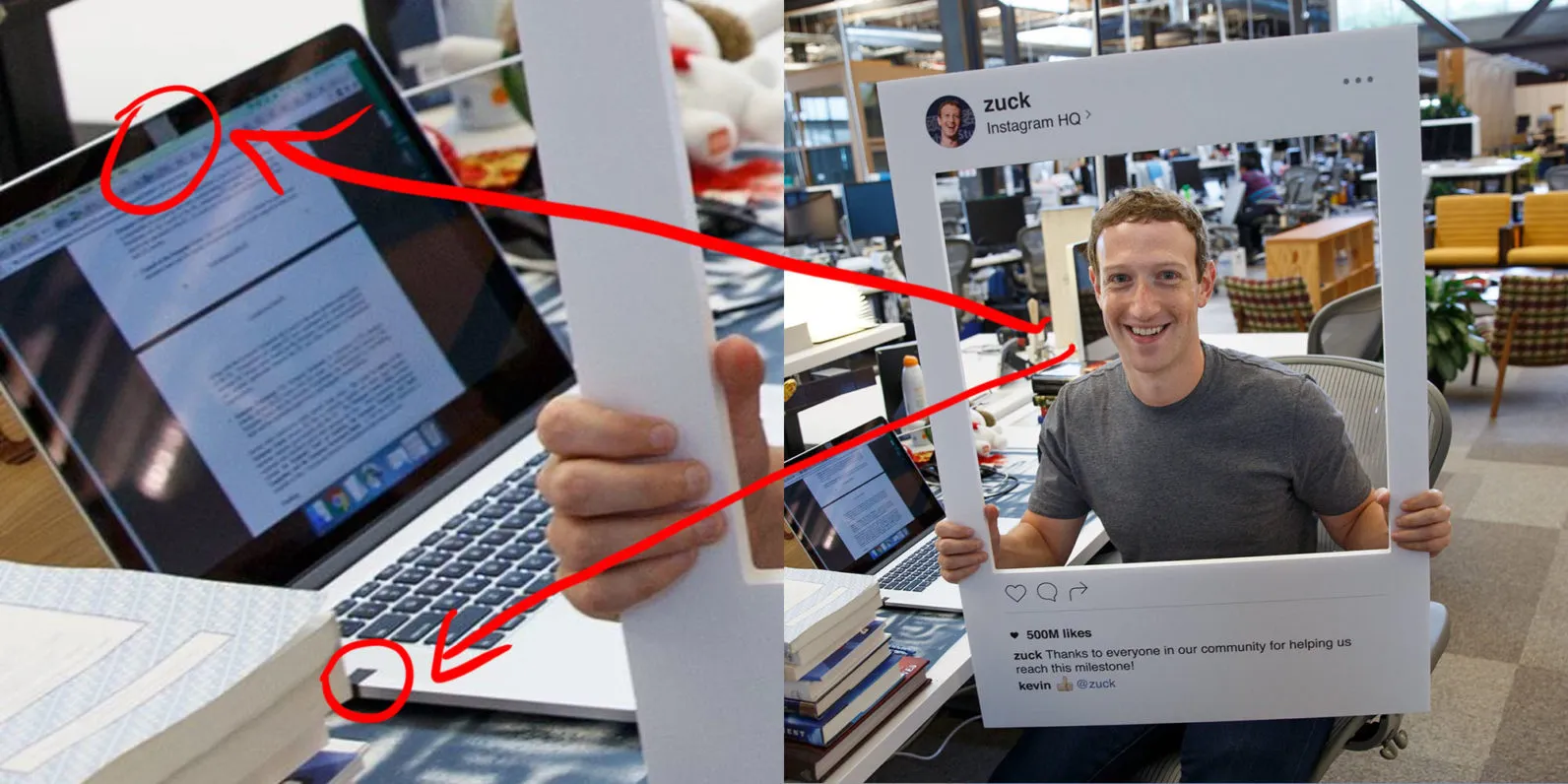
A second new addition is a disconnection switch. With a tap, the button disables all network activity and mutes the phone.
This one is primarily a “do not disturb” feature. The concept taps into the growing demands for distraction-free environments and digital detoxes. In the future, Murena may add an option to customise the switch’s purpose.
As for the conventional specs, they’re comparable to typical mid-range devices. There’s a 6.43″ high-resolution display, 128GB of storage, 8GB of RAM, a 4000mAh battery, and a 2.1GHz octa-core processor.
For photos, you get a 25mp front selfie camera and a rear triple camera (5mp, 13mp, 64mp). Undoubtedly, the pictures dramatically outclassed those from my decrepit Samsung — although that’s pretty faint praise. If you want the finest photos and the leading specs, you’ll need a top-end phone.
“Our standpoint is not to compete on the specs, because if you want to compete on specs, it never ends,” Noetinger says. “At the end of the day, even if the device is not premium, it will most likely be enough for most people out there for day-to-day use.”
Murena hopes the smartphone’s privacy edge attracts these regular consumers. But the mass market remains a formidable target.
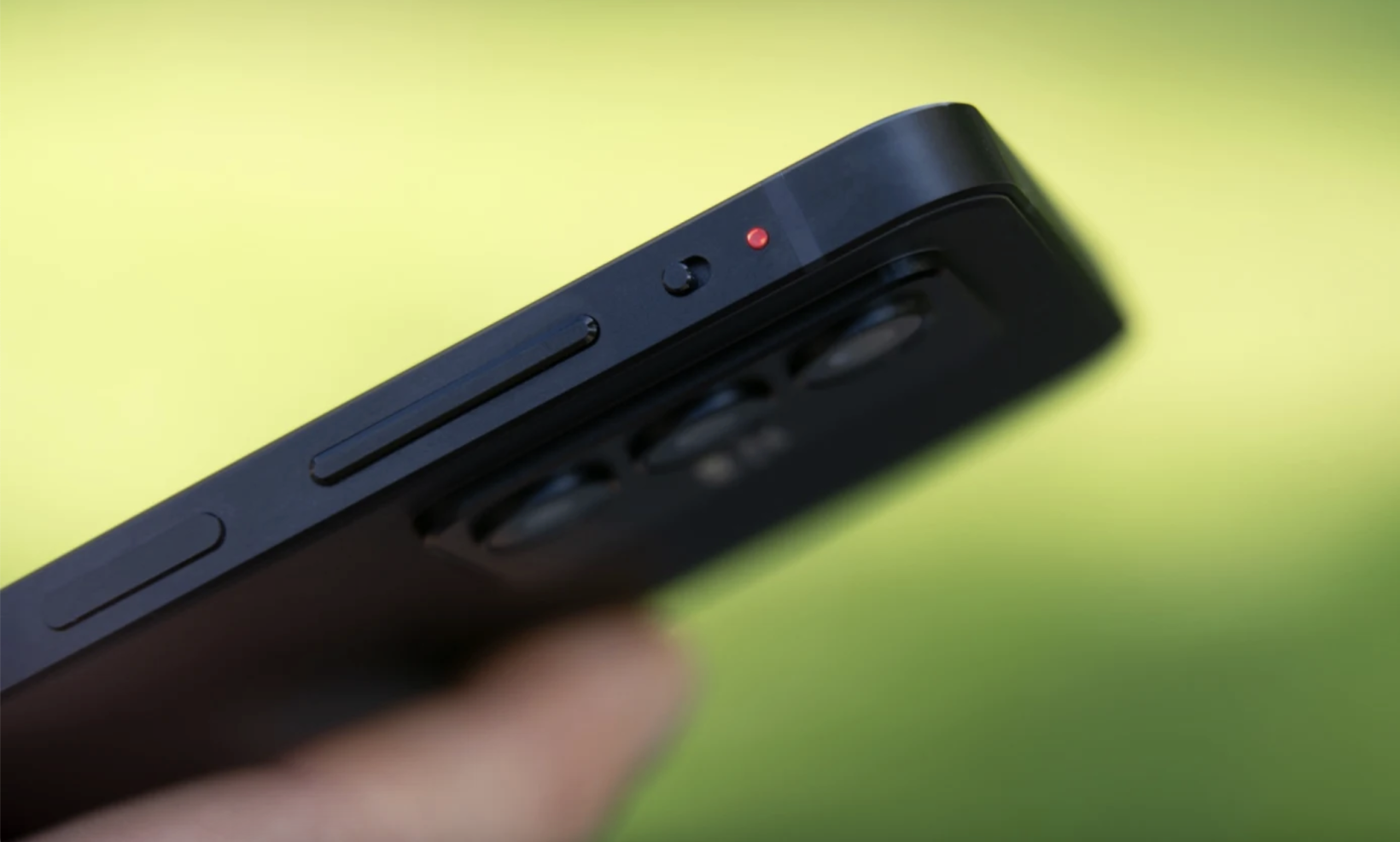
New looks
The mobile industry is mired in a historic downturn. Stocks have slumped, sales have slowed, and innovation has stagnated. In 2023, global smartphone shipments are projected to decline by 4.7% to 1.15 billion units — a ten-year low. These are challenging times for new entrants to the market — but they also present opportunities.
A key problem for the sector is consumer apathy. With massive price tags for minor upgrades to interchangeable devices, the big brands no longer provide a big bang for our buck. The latest iPhones and Androids simply aren’t as special as they used to be.
In these uninspiring times, the Munera 2 stands out. By combining inventive hardware, privacy-centric software, and an alternative to the Android/iPhone duopoly, the device has a unique appeal.
Those charms, however, won’t attract everyone. Without the familiar Android interface, a recognisable name, and default Google service, the device will struggle to reach the mainstream.
But for privacy enthusiasts, early adopters, and big tech boycotters, the release date is worth adding to the calendar. Until that day comes, my ageing Samsung will have to survive a few more charges.
The Murena 2 is now available for preorder on Indiegogo. The retail price is $499 in the US, €499 in the EU, £429 in the UK, $679 in Canada, $829 in Australia, and 479 CHF in Switzerland. Shipments are estimated to start in December 2023. The official public launch is planned for early 2024.
Get the TNW newsletter
Get the most important tech news in your inbox each week.


